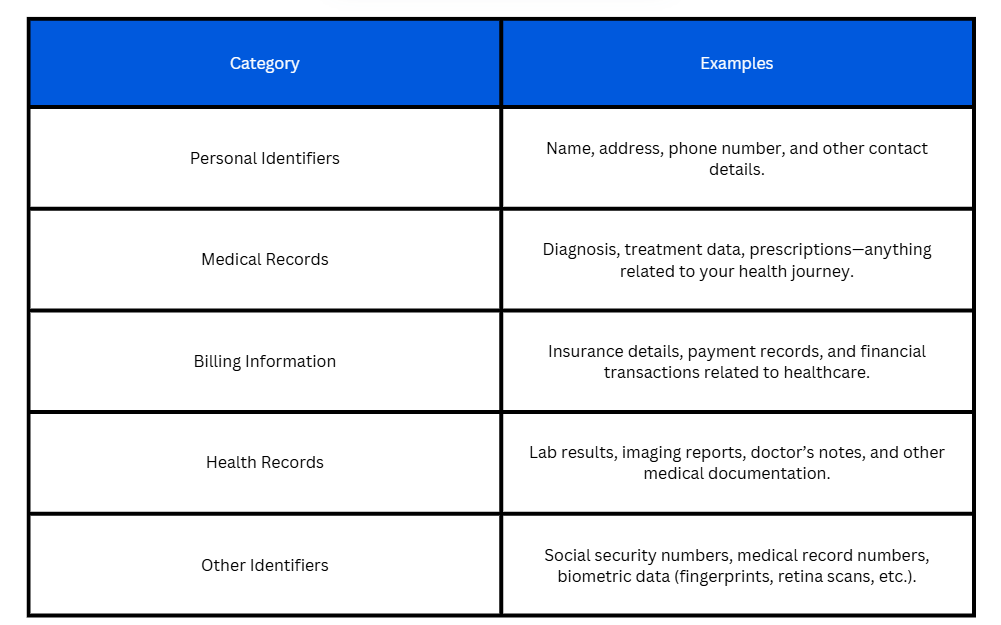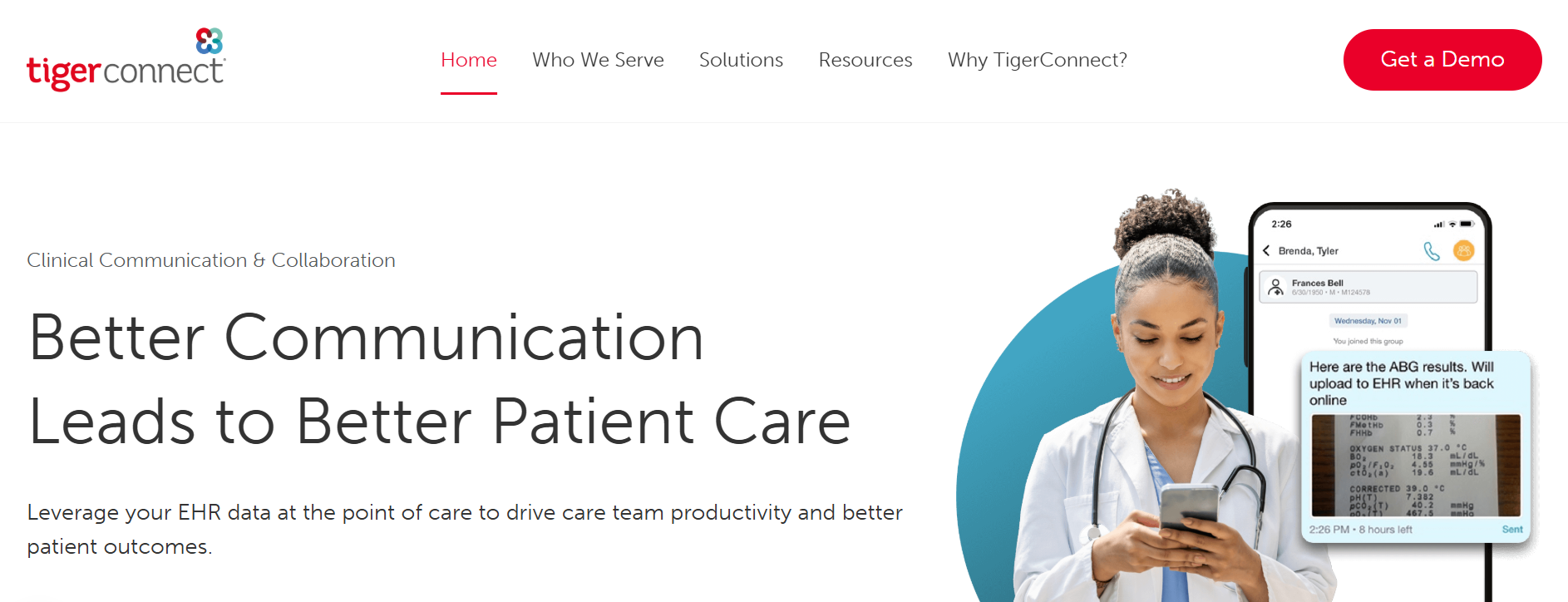- Home
- Learn
- Healthcare
- HIPAA Compliant Text Messaging For Healthcare Providers
HEALTHCARE
HIPAA Compliant Text Messaging For Healthcare Providers
Contents
If your work in healthcare involves texting patients, colleagues, or partners, you need to be sure you’re doing it the right way — secure and in line with HIPAA regulations. Whether you’re a physician, nurse, office manager, or part of a healthcare IT team, this guide will help you navigate HIPAA-compliant messaging so you can communicate with confidence while protecting patient privacy.
Every time you send a message to a patient about their appointment, pass along their details to your healthcare team, or refer them to a specialist, you’re dealing with sensitive data.
Why sensitive?
Any personal data that links to a patient’s identity in the healthcare space is considered Protected Health Information (PHI). And as the name suggests, PHI is guarded by stringent federal laws issued by the U.S. government under the label HIPAA.
A set of rules that sets the norm for how patient information should be handled, stored and shared — that is HIPAA in a nutshell.
So, when you are under the watchful eyes of HIPAA, it is wise to deal with what is sensitive carefully — especially when it is bound to move across different mediums.
Every message exchanged by healthcare practitioners involving PHI — whether internal, with patients, or with other healthcare professionals is bound by HIPAA’s restrictions; its demands being tight protection of data from unauthorized access and full compliance with its privacy rules.
So, what does this mean for you?
Let’s find out as we break down the essentials of HIPAA-compliant messaging — what it is, why it matters, and why it’s critical to your practice.
Also, if you’re eager to know the best practices for HIPAA-compliant texting, click here to skip ahead.
We saw what it means to be HIPAA compliant. But what does it mean in the context of text messaging in healthcare?
To know this, we must first look at what constitutes Protected Health Information HIPAA strives to protect.
Any information that can identify a patient and is linked to their medical condition, healthcare services, or treatment is classified as Protected Health Information (PHI).

So, in accordance to HIPAA standards, the secure transmission of PHI via text messages is what we call HIPAA-compliant texting.
Anytime PHI is stored, transferred, or accessed in an electronic format, it becomes electronic Protected Health Information (ePHI). As one can imagine, ePHI is more prone to breaches — since it gets moved around and is relatively easier to retrieve. So extra care is demanded to protect it from unauthorized access and misuse.
For this reason, HIPAA has dedicated a rule for the protection of ePHI known as the Security Rule.
Texting is easy; it gets things done fast. But the trade-off is, as we saw, the looming risk of data breaches.
So, texting platforms that do not comply with HIPAA’s Security Rule are deemed unfit for handling ePHI.
To stay within the bounds of the Security Rule, healthcare organizations need a secure, fully compliant platform — such as LeadSquared’s communication module.
But there are procedures to this. Before healthcare practices can make use of these platforms, they must first enter into a Business Associate Agreement with the platform vendors. This is HIPAA’s way of ensuring both parties agree to protect patient information and are aware of the consequences if they fail to do so.
So, without knowing the rules or having the right tools, you can end up on the other side of HIPAA compliance – where hefty fines, loss of reputation, legal consequences and more await you.
We had a glimpse into what happens when healthcare providers violate HIPAA compliance. Now, let’s take a deeper look at the same.
The U.S. government’s Department of Health and Human Services (HHS) is responsible for enforcing HIPAA rules. The penalties they levy for violations are structured in a tiered system based on the level of negligence:

In extreme cases where a healthcare provider knowingly and wrongfully discloses PHI, criminal penalties may also apply, leading to jail time.
Beyond fines, a HIPAA violation can severely impact a healthcare provider’s reputation. A data breach or improper disclosure of PHI can erode trust, making patients hesitant to continue care with the provider or facility.
Publicly reported HIPAA breaches can also damage professional credibility, resulting in loss of business, difficulty securing partnerships, and even termination of contracts with insurers or healthcare networks.
Regulatory investigations following a HIPAA violation can lead to increased scrutiny of a provider’s security policies and workflows. This may result in mandatory compliance training, costly security upgrades, and operational delays. Providers may also face lawsuits from affected patients, further complicating their legal and financial standing.
Text messaging is a powerful medium for communication in healthcare. Here are key scenarios where it must comply with the rules of HIPAA.
Medical teams often exchange patient information to coordinate care:
Text messaging mediate a lot of interactions between providers and patients as well:
Within healthcare facilities, secure messaging is crucial for operational efficiency while maintaining compliance:
Now that the scenarios for HIPAA-compliant messaging have been covered, let’s see how you can put them into practice.

With the risks clear, healthcare organizations must take proactive measures to prevent HIPAA violations. Let’s see how this can be done in the context of text messaging.

Before using any messaging platform, confirm that the vendor is contractually bound by HIPAA regulations. A signed Business Associate Agreement ensures that they uphold the same security standards your organization is required to follow. Without it, even the most encrypted system won’t make you compliant.
Messages should be scrambled into an unreadable format the moment they leave the sender’s device and remain that way until they reach the intended recipient. Without encryption, PHI can be intercepted, exposing sensitive data to unintended parties.
A secure messaging platform can help you automatically encrypt all transmitted ePHI, reducing the risk of a data breach

Not everyone in a healthcare setting needs access to every piece of information. Role-based access restrictions ensure that only those with a legitimate reason can send, receive, or view PHI via text. If someone doesn’t need it, they shouldn’t have it.

HIPAA allows healthcare providers to text patients — but only if they understand the risks and give informed consent. Document and include details on the types of messages they’ll receive and ensure responses from their end will also be secure.

Even with the best protections on the level of software, an unsecured device can negate it all. Implement policies that require password protection, biometric authentication, remote wipe capabilities, and automatic lockout after inactivity. A lost or stolen phone should never mean exposed patient data.

Before allowing access to PHI, systems should verify that the person logging in is exactly who they claim to be. Multi-factor authentication (MFA), which requires an additional verification step beyond a simple password, adds a necessary layer of security.
HIPAA compliance isn’t just about keeping data secure — you must also be able to prove you did so when enquired. Audit logs track every message, who accessed it, and when, ensuring that any security incidents can be investigated and addressed.
Regular monitoring of these logs helps:
A good HIPAA compliant texting platform, like LeadSquared, offers you the benefit of bringing together all these features under one single software.
Here are the core features of a HIPAA compliant messaging system:
Regulating user permissions ensures that PHI is accessible only to those with a legitimate role in a patient’s care. Physicians, nurses, and administrative staff should have role-based access levels, limiting their visibility to only the data necessary for their job functions.
Without strict access management, even an encrypted messaging system becomes a security risk.
Compliance is also about accountability. Audit trails and reporting features track every message sent, received, and accessed within the system. This means that if a data breach occurs, healthcare organizations can trace exactly what happened, who was involved, and when it occurred.
HIPAA requires organizations to retain records of PHI access and modifications. A robust messaging platform should generate real-time reports that provide full visibility into user activity, helping organizations detect suspicious behavior before it escalates into a violation.
While HIPAA places strict controls on messaging, it doesn’t mean healthcare providers must sacrifice efficiency. Mass texting and automated messaging allow providers to securely send:
HIPAA-compliant messaging platforms should allow administrators to restrict downloads, preventing PHI from being stored on personal devices or outside the secure system.
Additionally, automatic log-off features should be in place to protect against unauthorized access on unattended devices. If a user steps away or forgets to log out, the system should automatically lock the session after a set period of inactivity.
A secure messaging system shouldn’t exist in isolation. Seamless integration with Electronic Health Records (EHR) and Electronic Medical Records (EMR) ensures that messages, updates, and clinical data are synchronized in real-time.
Without integration, healthcare staff may have to manually input patient data, increasing the risk of errors and inefficiencies.
While HIPAA governs the security of patient information, messaging must also comply with the Telephone Consumer Protection Act (TCPA). TCPA regulates how healthcare providers can send automated messages, requiring:
Healthcare communication should be more than just one-way notifications—it should facilitate meaningful interactions. Two-way texting allows patients to confirm appointments, ask follow-up questions, and receive real-time responses from healthcare organizations.
To maximize efficiency, messaging platforms should also be interoperable with existing healthcare systems, including:
A truly compliant system should provide both security and usability, ensuring that messages flow freely between authorized users while remaining protected from unauthorized access.
Even with encryption and access restrictions in place, healthcare organizations must remain vigilant against cyber threats. A proactive security system should continuously monitor for:
When a potential breach is detected, the system should trigger real-time alerts, allowing IT teams to investigate and contain threats before patient data is compromised. Without active monitoring, even a minor security lapse could escalate into a full-scale data breach.
At the heart of data security are encryption and protocols designed to prevent unauthorized access:
Here are 5 top HIPAA compliant text messaging software that your healthcare practice could benefit from:

TigerConnect’s secure messaging platform is designed for healthcare professionals. It offers features like real-time messaging, voice and video calls, and file sharing, all within a user-friendly interface. The platform integrates with existing clinical systems, streamlining workflows. TigerConnect is also accessible across various devices, including smartphones and desktops, ensuring flexibility and convenience for healthcare professionals.

OhMD is a HIPAA-compliant patient communication platform that enables secure, two-way texting between healthcare providers and patients. It integrates with more than 60 healthcare systems including electronic health record (EHR) systems, allowing seamless synchronization of patient data. Features include automated reminders, broadcast messaging, and video visits, all accessible through a single platform. OhMD aims to streamline patient engagement and improve care coordination by facilitating efficient communication.

Spok is a secure communication platform tailored for healthcare organizations. It offers features such as encrypted text, image, and video messaging, real-time access to accurate directories, and on-call scheduling. Spok integrates seamlessly with existing clinical systems, enhancing workflow efficiency.

Spruce Health is a secure messaging platform designed for texts, calls, and video visits. It manages patient conversations in one place while maintaining privacy and compliance. With features like automated workflows, team collaboration, and EHR integration, Spruce simplifies patient engagement.

Notifyd is a HIPAA-compliant messaging app designed for home healthcare providers, enabling secure communication among nurses, schedulers, and back-office staff. It allows users to send messages, share documents, and capture images and videos directly from their phones or desktops. The app integrates with popular HIPAA-compliant cloud document storage solutions, ensuring organized and secure document sharing. Notifyd also integrates with various home healthcare software solutions, streamlining workflows and enhancing operational efficiency.
Choices vary depending on the unique needs of your healthcare practice. Take your time to explore the features and find the solution that best supports your work.
Secure messaging solves one problem, but healthcare communication is a bigger game filled with a lot more constraints to account for. If you are looking for more control over these constraints, a more comprehensive tool is what you need.
This is where a healthcare CRM makes a difference.
A healthcare CRM grants total control over managing patient interactions — it doesn’t just send HIPAA compliant texts; it connects them to patient history, tracks follow-ups, and integrates with other mediums and systems (like social media and EHR) to ensure no conversation exists in a vacuum.
Let’s see how a HIPAA-compliant CRM, such as LeadSquared, serves as a base for text messaging to be utilized to its full potential in healthcare.
Patients reach out through various channels — texts, calls, emails, or website forms. A CRM ensures that every incoming message is captured and assigned to the right person in your team.
Instead of playing phone tag or manually coordinating appointments over text, a CRM automates the process. Patients can receive a text reminder with a link to confirm or reschedule, making scheduling smoother and reducing no-shows.
Texting alone can’t keep track of patient history, but a CRM can. Every message — whether it’s a follow-up, test result notification, or reminders — can be logged and linked to the patient’s profile. This ensures a complete view of patient interactions, making communication more informed and consistent.

Not all patients engage the same way. A CRM can track how often patients respond to text messages and flag those who might need a different approach, such as a follow-up call or additional reminders. This helps personalize communication and improve patient adherence.
A CRM that connects with your EHR/EMR allows messages to be more than just standalone texts. If a provider texts a patient about a prescription or a test result, that message can be logged alongside their medical history, ensuring all communication is part of seamless delivery of care.
Every message in healthcare involving PHI bears the responsibility of protecting sensitive info, which can only be necessitated by a HIPAA compliant texting software.
They lock down sensitive conversations, keep patient data safe, and ensure communication doesn’t come at the cost of compliance.
But, for organizations that need more—who don’t just want to send messages but also track them, automate follow-ups, and tie every interaction back to the bigger picture — a HIPAA-compliant CRM is the way forward.
If that sounds like what you need, LeadSquared’s HIPAA-compliant CRM brings it all together—secure messaging, patient tracking, automation, seamless integration with your existing systems and much more.
Want to see LeadSquared in action? Book a demo today!
HIPAA-compliant texting is a secure way for healthcare providers to communicate while ensuring patient information is protected according to the rules of HIPAA. Unlike regular texting or email, which can be intercepted or accessed by unauthorized parties, HIPAA-compliant texting uses encryption, access controls, and audit logs to keep Protected Health Information (PHI) secure.
Think of it as texting—but with extra security layers that keep you compliant and protect your patients’ privacy.
No, standard SMS and personal messaging apps like WhatsApp or iMessage are not HIPAA-compliant because they lack encryption, access controls, and monitoring. If PHI is sent through unsecured channels, it could lead to a HIPAA violation, fines, and data breaches.
To communicate securely, you need a HIPAA-compliant texting platform that ensures messages are encrypted and accessible only to authorized users.
Any message that contains Protected Health Information (PHI) must be HIPAA-compliant. This includes:
Patient names, contact details, or medical record numbers
Appointment details if linked to a specific patient
Lab results, treatment plans, or diagnoses
Billing information tied to a patient
Basically, if a text message contains anything that could identify a patient and relates to their healthcare, it needs to be sent through a secure, HIPAA-compliant platform.
Yes, HIPAA allows healthcare providers to text patients, but you must get their consent first. The patient must be informed about the risks of text messaging and agree to receive communications that may contain PHI.
A simple way to do this is by having patients sign a consent form at intake, stating they understand the risks and still choose to receive texts.
Violating HIPAA’s messaging rules can lead to serious consequences, including:
Fines depending on severity
Legal action if patient information is exposed or misused
Reputation damage, leading to loss of trust and potential patients
Even an accidental text message with PHI sent to the wrong number could result in a HIPAA violation.
Encryption converts messages into a secure format that can only be read by the intended recipient. Even if someone intercepts the message, they won’t be able to read it without the proper decryption key.
HIPAA doesn’t strictly require end-to-end encryption if alternate measures are put in place to ensure safety. But encryption is a safe way to ensure that patient data can’t be accessed by hackers, telecom providers, or unauthorized users.
Yes, voicemail messages that contain PHI are subject to HIPAA rules. If you’re leaving a voicemail for a patient, be careful about what you say. It’s best to keep it brief and avoid including sensitive details.
To stay compliant, your organization should:
1. Use a HIPAA-compliant texting platform instead of regular texting
2. Train staff on HIPAA rules and secure communication best practices
3. Control access so only authorized personnel can handle PHI
4. Enable audit logs to track and monitor message activity
5. Get patient consent before texting any PHI
No, even if you don’t mention the patient’s name, it’s still risky. HIPAA considers any information that can identify a patient and relates to their health as Protected Health Information (PHI). So, no.
When choosing a secure messaging solution, make sure it includes:
1. End-to-end encryption for all messages and attachments
2. Access controls to restrict unauthorized users
3. Audit logs to track message activity
4. Automatic message expiration to prevent PHI from lingering on devices
5. Secure file sharing for patient documents and images
6. Multi-factor authentication (MFA) to protect against unauthorized access
HIPAA compliance in communication requires protecting patient information at every step, whether it is shared by email, text, phone, or telehealth. For this, as a healthcare provider, you must choose secure tools and set up the right safeguards for staff and vendors.
Use secure platforms and agreements
Work only with communication tools that meet HIPAA standards, such as encrypted email, secure texting, or patient portals. For each vendor you use, make sure a Business Associate Agreement (BAA) is in place. A BAA is the legal safeguard that ensures they handle protected health information responsibly.
Everyday messaging practices
Families often prefer texts and emails, which is fine as long as you use them wisely. Stick to safe content like reminders, confirmations, or general updates. If you need to share details, use a HIPAA-compliant texting service or portal. For voicemails, keep the message generic by naming your clinic and requesting a call back instead of leaving patient-specific details.
Controls inside your systems
Protecting data also depends on how staff access it. Use role-based permissions so people see only what they need. Turn on two-factor authentication, require strong passwords, and keep audit logs. If staff access data on mobile devices, require device passwords and set policies to wipe lost or stolen devices remotely.
Telehealth sessions
Only use HIPAA-compliant telehealth platforms. Ask families to join from a private space and confirm identity before beginning sessions. These steps help prevent accidental disclosures.
Training and policies
Even with the right tools, staff need clear direction. Train your team on which channels are safe for which kinds of information, and refresh that training regularly. Include what to do if something goes wrong, such as sending an email to the wrong address.
A HIPAA-compliant healthcare CRM like LeadSquared can simplify compliance for you. In LeadSquared, for example, you can collect information securely through forms, manage access with user roles, log activity for audit purposes, attach insurance documents through OCR integrations, and trigger automated follow-ups without exposing sensitive data.
When behavioral health clinics communicate with patients or referral sources, they must maintain strict protections around protected health information (PHI).
Text / Secure Messaging
Regular SMS does not meet HIPAA standards unless very carefully configured (and only when PHI is minimal and consent is documented). For full PHI texting, platforms such as TigerConnect offer end-to-end encryption, audit logs, user role controls, and attachments like images or PDFs.
Email + Voice/Phone
For email and phone, you’ll want a platform that signs a BAA, encrypts data in transit and at rest, offers logging of calls or voicemails, and supports secure attachments. Many healthcare CRMs like LeadSquared incorporate these elements or integrate with specialist vendors. LeadSquared’s healthcare CRM offering covers multichannel communication (text, email, voice) with encryption and auditability
Criteria when selecting a platform
Encryption of messages/attachments both while transmitting and stored.
Role-based access and user authentication (including multi-factor where possible).
Audit trails showing who sent what, when, and to whom.
BAA signed with any vendor handling PHI.
Support for integrations so communication data resides in your CRM and workflow tools, not isolated.
Using a CRM like LeadSquared ensures your text/email/phone interactions stay within the same intake and engagement workflow. So, when a secure text goes out, the system logs it, ties it to a patient record, triggers next-steps (e.g., appointment scheduling), and keeps everything beside your referral, conversion and treatment tracking. Because the platform is HIPAA-compliant and offers BAAs, it helps you build the engagement layer without adding extra tools to manage.